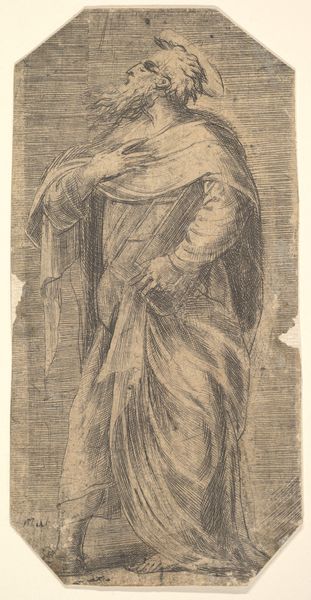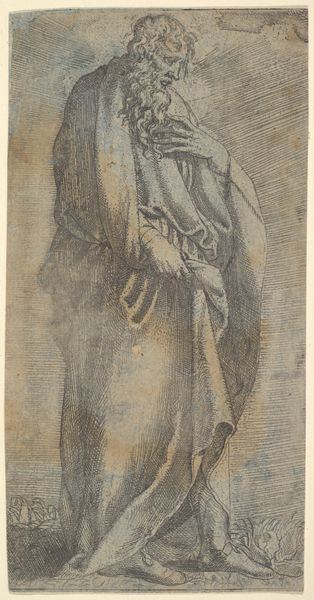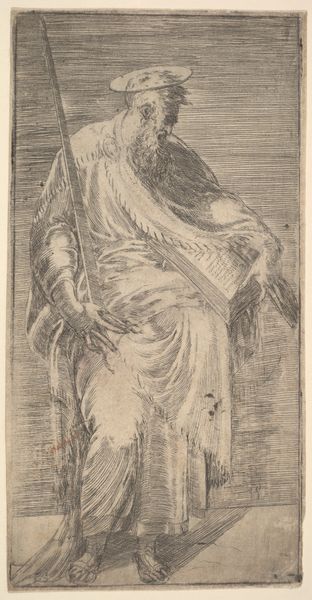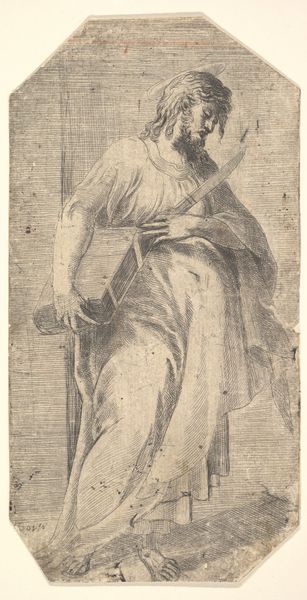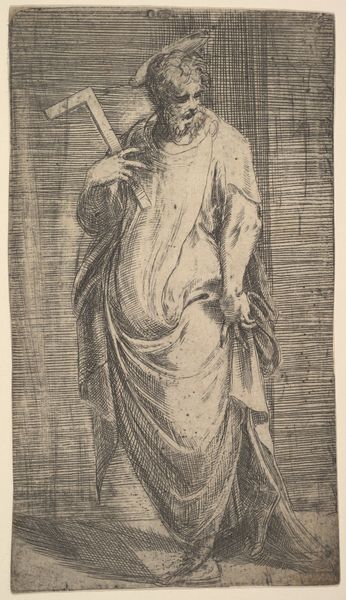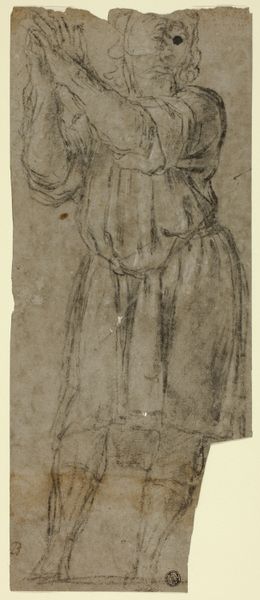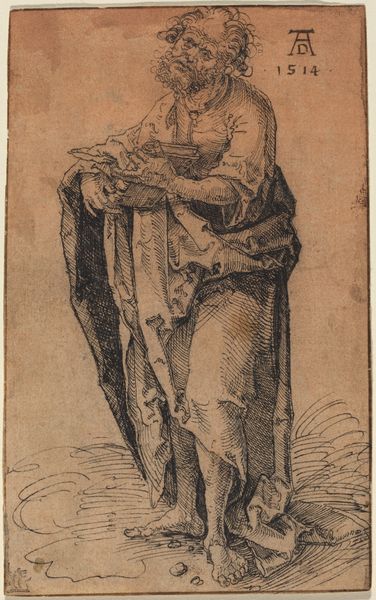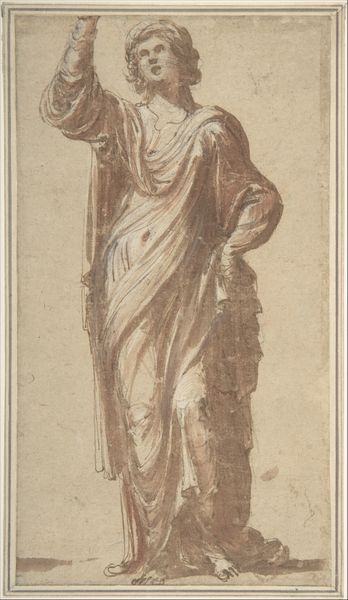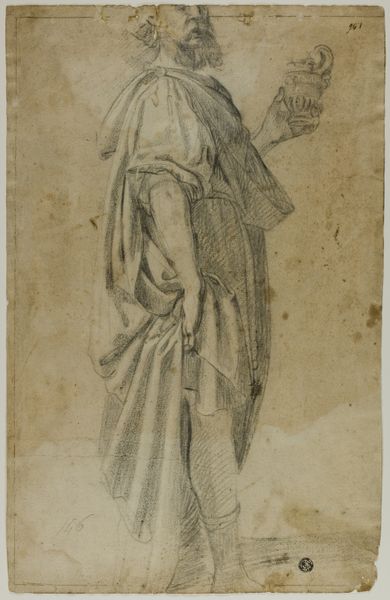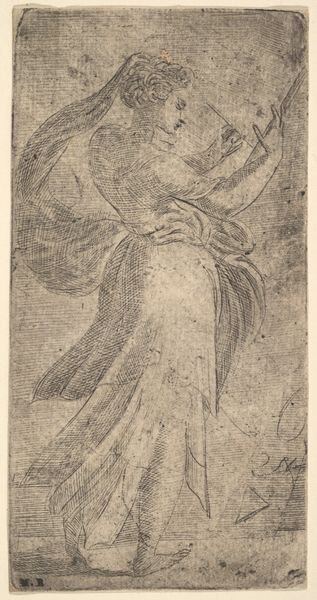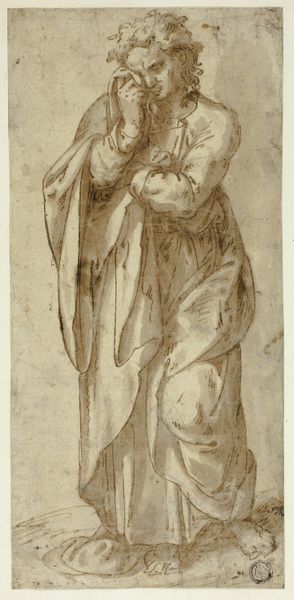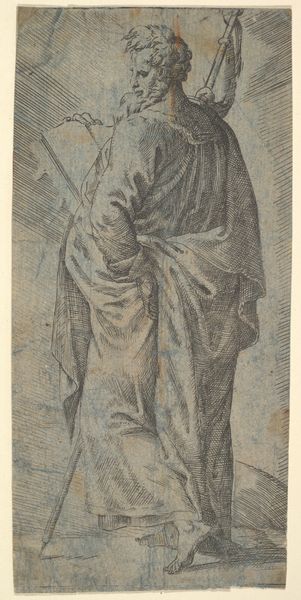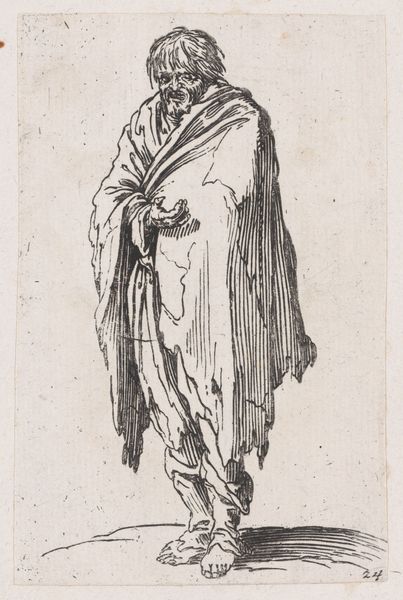
Saint Philip standing with a book under his right arm, from "Christ and the Apostles" 1543 - 1553
0:00
0:00
drawing, print, ink
#
portrait
#
drawing
# print
#
figuration
#
11_renaissance
#
ink
#
pencil drawing
#
italian-renaissance
Dimensions: sheet: 8 1/16 x 4 5/16 in. (20.5 x 11 cm)
Copyright: Public Domain
Editor: So, this is Andrea Schiavone's print, "Saint Philip standing with a book under his right arm, from Christ and the Apostles," dating back to the mid-16th century. It's ink on paper. The figure seems contemplative, almost weary. What symbols jump out at you here? Curator: The book is definitely central, isn’t it? In religious iconography, a book often signifies knowledge, wisdom, and in the case of a saint, their devotion to scripture and their teachings. Consider how the way the book is clutched speaks to not only Saint Philip’s story but that of the Church through generations. The somewhat worn appearance of the print itself adds another layer to the symbolism of knowledge passed down, bearing the marks of time and interpretation. Editor: That’s interesting. I hadn't thought about the physical print contributing to the symbolism itself. Why Saint Philip, though? Was there a particular significance to him during the Renaissance? Curator: Philip, traditionally associated with hearing and responding to the call to follow Christ, can be interpreted as representing the Church's mission to spread the word. What emotions does his posture suggest to you? Editor: Humility, perhaps, but also maybe a bit of world-weariness, like the weight of responsibility? The lines around his eyes are particularly telling. Curator: Exactly! That weariness hints at the burdens, challenges, and even crises the Church faced during the Reformation. The artist might be subtly commenting on the state of religious authority at the time, inviting the viewer to reflect on its meaning. Editor: This has totally reshaped my understanding; it's not just a portrait, it's a statement about faith and the institution of the Church at a tumultuous moment in history. Curator: Precisely. Renaissance art often operates on multiple layers, inviting viewers to actively decode and engage with complex cultural and theological ideas. Looking closely unveils so much about the hopes, anxieties, and memory embedded within.
Comments
No comments
Be the first to comment and join the conversation on the ultimate creative platform.
